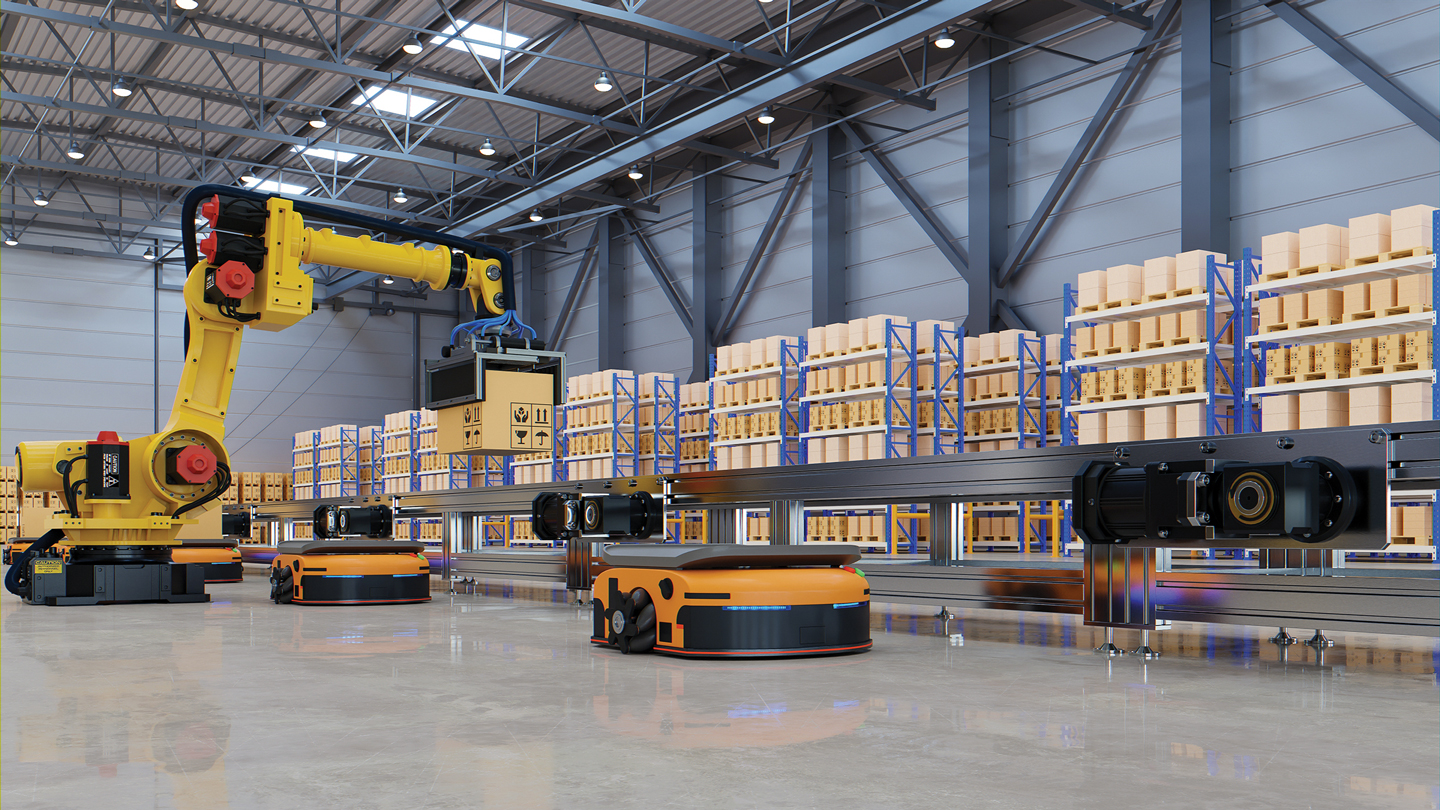
The Future of the Warehouse: Automated Smart Buildings
Developers need to prepare now for the fast-moving evolution of warehousing and the growing expectations for last-mile delivery.
It’s the middle of the night, and a warehouse manager is stirred from his slumber by a notification ding on his warehouse control system app.
Across town, a self-driving, electric 18-wheeler pulls silently into a minimally sized loading court, its onboard computer calculating the exact turning radius needed to back into position. Its sensors have already alerted the building control system of its arrival, and the dock doors slide open.
As the truck backs into place, a charger extends to begin recharging the truck while the forklifts unload, the depalletizer unpacks, and an array of other bots begin scanning SKUs (stock keeping units) and moving items to narrow rack aisles and up vertical conveyors 60-80 feet in the air to their final designated rack positions.
As the outbound shipments depart and this perfectly coordinated technological logistics ballet concludes, the building lights turn off. All robots return to their charging stations and enter standby mode, in a state of perpetual readiness for their next task.
This may sound like science fiction, but the technological advancements of the past few years are making automated warehouses a reality. More than 80% of warehouses today have no automation whatsoever, but momentum is growing, and more than a quarter of U.S. warehouse inventory will be automated by 2027, according to market research firm Interact Analysis. This indicates that this sector is going to change dramatically over the next five to 10 years. Developers, architects and engineers will need to prepare for these changes or risk getting left behind.
Catalysts Driving Change
Several factors are driving the warehousing evolution, but the greatest catalysts are the rise of e-commerce during the COVID pandemic era, pressures in the labor market and advancements in technology.
Many nonessential workers became intimately acquainted with the concept of remote work during the pandemic. E-commerce, or online retailing, allowed consumers to work, live, play and eat, all from the comfort of their own homes. This greatly increased the need for point-to-point delivery — keeping a close eye on that “last mile” from warehouse to homes. Instant gratification and the expectation of same-day delivery dramatically changed the way things are inventoried, managed and shipped on a local and national scale.
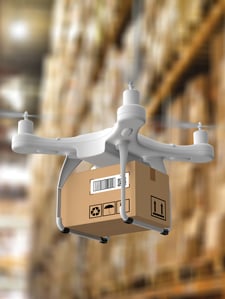
Delivery drones are likely to become key parts of future warehouse operations. Baranozdemir via iStock/Getty Images Plus
According to a 2020 Forbes article, COVID-19 accelerated the growth of e-commerce by $52 billion, up 77% year over year, advancing the industry four to six years ahead of its organic growth trajectory.
As the demand for e-commerce grew, so did the need for more warehousing and labor. A typical warehouse distribution center employs approximately 53% more workers than it did five years ago, and labor costs make up more than 65% of an average facility operating budget. Record wage increases, coupled with historically high warehouse job openings, increased health care and benefits costs, and heightened competition for talent, created the perfect storm among warehouse and distribution operators to search for alternatives.
To stabilize operational costs, companies looked toward automation, robotics and conveyance systems to create a more efficient process for moving products through their facilities. The average human order picker can make 60-80 picks per hour compared with 300 picks per hour when using sorters and conveyors. Amazon announced last year that its Robin robotic handling system had sorted over 1 billion packages in 2022, or one-eighth of all the orders Amazon delivered worldwide. As the world’s largest manufacturer of industrial robots, the company has deployed more than 750,000 mobile robots across its global operations.
Operations that have switched to pick/inventory management systems versus manual processes have seen a 25% gain in productivity, a 10% to 20% gain in utilization of space, and 15% to 30% more efficient use of stock, according to EasyPost.
Trends in the Future of Warehouse
To accommodate and fully capitalize on this increased use of automation, conveyance and robotics, building and site design will need to evolve. Building structures will have increased clear heights, thicker and flatter floor slabs, and stronger roof structures to allow for more efficient conveyance and rack support systems. Power infrastructure will need to be bigger to accommodate electric trucks, bots, charging stations and other devices. Facilities with more automation can run 24-7, leading to increased power usage. Rising energy costs and the unreliability of public transmissions systems during peak times will likely reignite interest in alternative sources, including renewables such as solar panels.
Building-technology needs will greatly increase to include more Wi-Fi coverage for the Internet of Things (IoT), allowing devices to communicate with each other and centralized control systems, sensors and cameras. These robots will need charging stations and more stable climate control in the warehouse, but there will be less need for human support functions like offices, meeting rooms, drivers’ lounges, restrooms and parking.
Site coverage ratios will increase due to self-driving vehicles and other logistics management systems operating more efficiently, eliminating the need for oversized loading docks, unused doors and wasted maneuvering clearances. Loading courts and the roofs of buildings will double as drone delivery/pickup staging areas.
However, all is not lost in the human element of the equation. These projects are most efficient when placed near residential rooftops, much like the retail model. This means developers and architects will need to get creative with site design to embed these automated warehouses more effectively into urban and residential last-mile locations, incorporating community amenities like walking trails and green spaces, retention ponds and local artist murals.
The warehouse box we’ve known for ages now has a new look and identity. It is finding itself a new home, closer to its clientele. Along the way, it is learning each day how to work smarter, not harder. Architects and designers who witness these changes firsthand with clients are at the forefront of these updates, and they are in high demand. It requires a major shift in how to think about design considerations that provide for the increasing presence of machines.
Jake Donaldson, AIA, is the managing partner at Method Architecture.
Relevant Research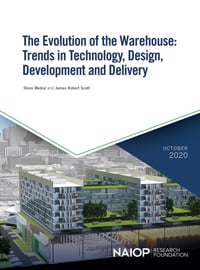
In 2020, the NAIOP Research Foundation partnered with two MIT researchers to examine the frontiers of warehouse automation. The study, “The Evolution of the Warehouse: Trends in Technology, Design, Development and Delivery,” describes how the acceleration of delivery timelines has reshaped industrial building interiors, with online retailers and third-party logistics firms making substantial investments in new technologies such as collaborative robots and automated storage and retrieval systems. In addition to increasing the productivity and profitability of industrial assets, new technologies are allowing retailers and building owners to add distribution uses to existing retail properties. To view and download the report, visit naiop.org/research-and-publications. |
|
In the Fall 2023 issue of Development, architecture firm Ware Malcomb put forth a prototype of logistics facilities for dense urban areas. It includes technologies such as machine learning and artificial intelligence that redefine how the building’s components interact while enhancing synchronization and increasing efficiency to maximize throughput. It also features automated 120-foot clear height racking, stacked delivery vehicle parking, and solar and wind strategies. Click here to read “The Logistics Building of the Future.” |
RELATED ARTICLES YOU MAY LIKE

Governments Turning to Adaptive Reuse Legislation for Additional Housing
Tax breaks, streamlined approvals and grants are some of the supply-side incentives.
Read More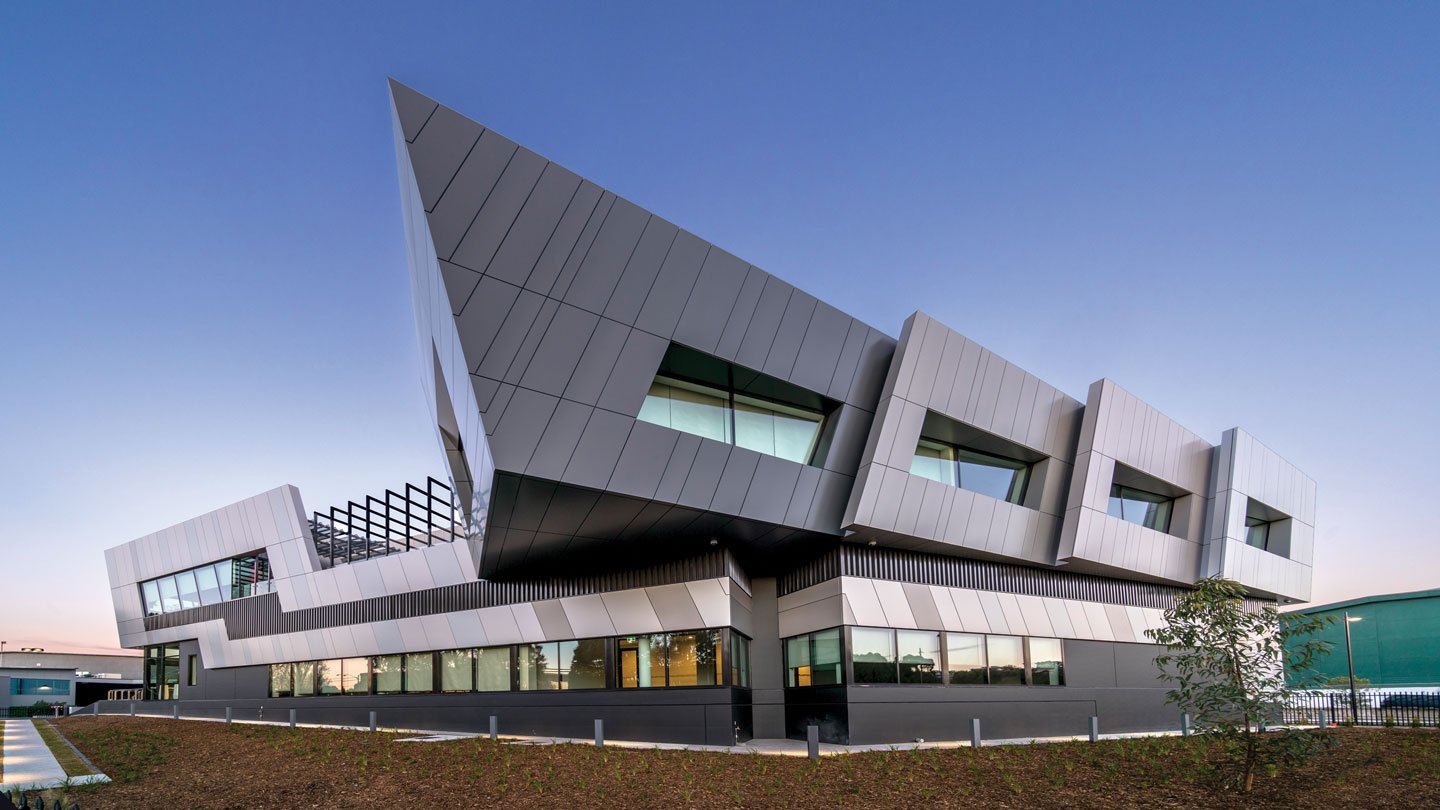
Data Center Real Estate: Challenges and Opportunities in the Digital Age
Data center inventory growth has accelerated across North American markets.
Read More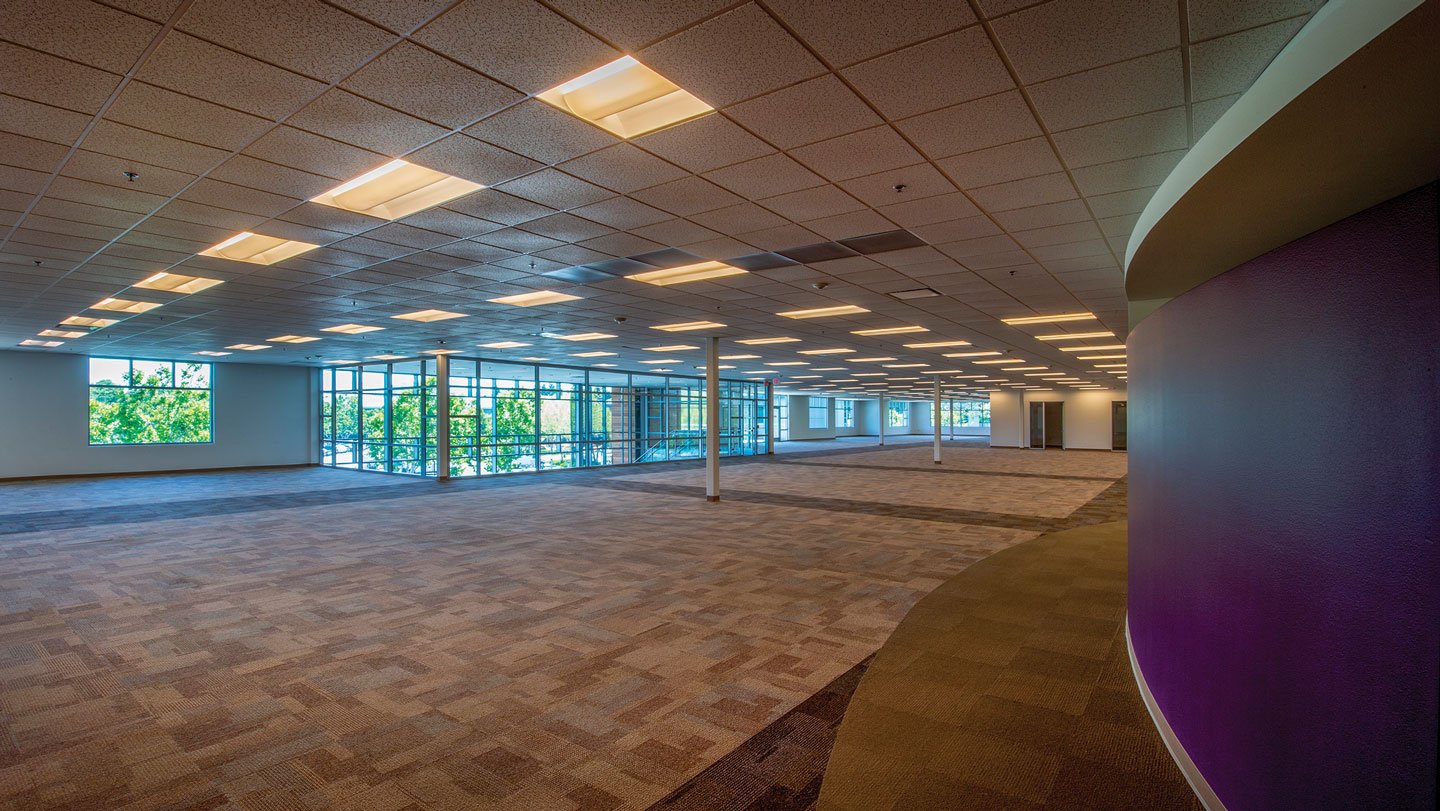
Ripe for Conversion
Will a radical change in the purpose of underutilized office buildings transform the market?
Read More



